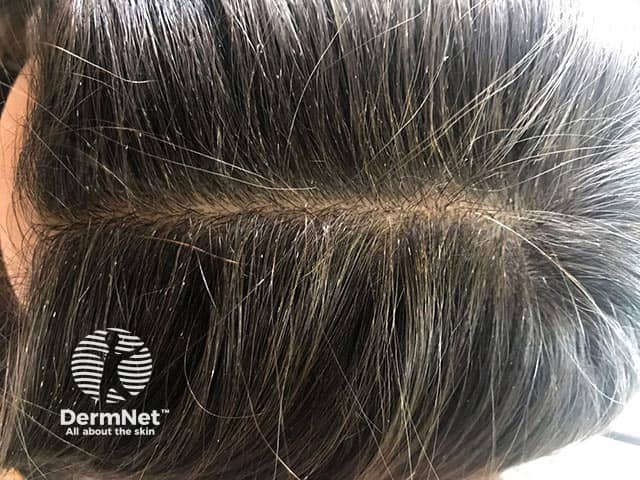Main menu
Common skin conditions

NEWS
Join DermNet PRO
Read more
Quick links
Author(s): Dr Georgia Koroneos, Resident Medical Officer, The Royal Melbourne Hospital, Australia (2023)
Reviewing dermatologist: Dr Ian Coulson
Edited by the DermNet content department
Introduction Demographics Causes Clinical features Variation in skin types Complications Diagnosis Differential diagnoses Treatment Prevention Outcome
Piedra is a fungal infection of the hair, characterised by the deposition of small black or white nodules along the hair shaft. These look like small stones, hence the name piedra, meaning ‘stone’ in Spanish.
Piedra is also known as Trichomycosis nodosa or Trichomycosis nodularis.
There are two types: black piedra and white piedra, caused by different fungi and named because of the colour of fungal deposits they cause on the hair shaft.

White piedra - nodules are adherent to the hair shafts.
There is a lack of data on the incidence and prevalence of piedra.
Piedra is associated with:
The exact mechanism by which piedra is contracted is not well understood, however, it appears that anyone who is exposed to a causative fungus is at risk.
Piedra is caused by infection of the hair with certain fungi.
Patients with piedra have small, round, or ovoid nodules of fungus attached to or encircling the hair shafts. These can range in size from <1 millimetre (mm) to a few mm in diameter. Piedra typically occurs on scalp hair but can also be found in facial, armpit, and pubic hair.
Piedra is otherwise largely asymptomatic and patients do not typically report any pain or itch. A clinical clue for doctors to consider piedra is a negative ‘hair pull’ test. This suggests the problem is not at the root of the hair, but somewhere along the shaft.
Although there are no documented racial, skin, or hair type predispositions for piedra, there may be an association with head coverings, such as the hijab.
Piedra is often chronic and can persist for years if left untreated. If treated, most patients will have a successful resolution.
Some types, particularly white piedra of the pubic region, have a higher rate of recurrence.